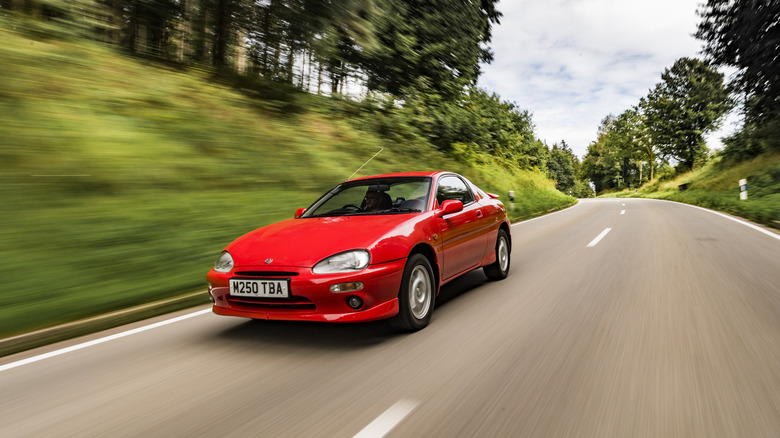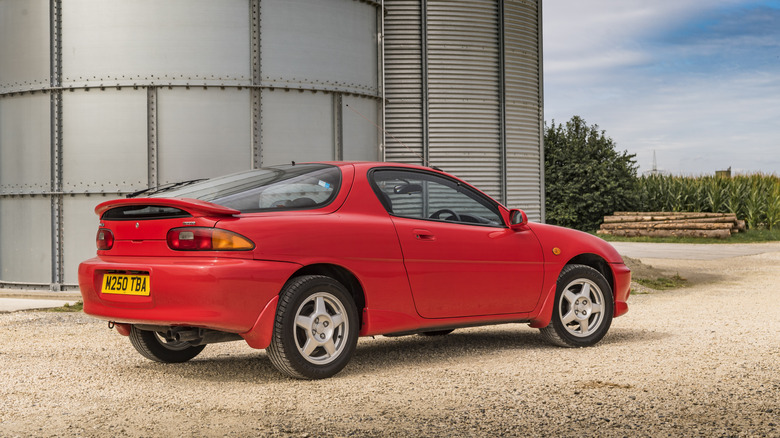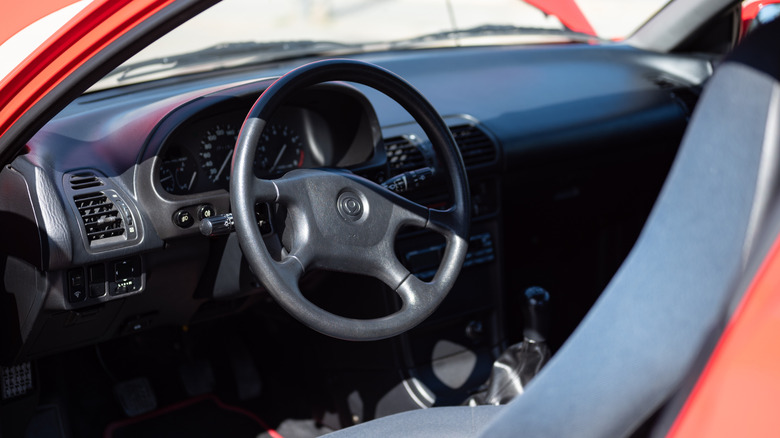What Was The Mazda MX-3 And Why Was It Discontinued?
Mazda is a pretty conservative car company by modern standards. Apart from the MX-5 Miata, which continues to be one of the purest and most driver-focused sports cars available at any price, the rest of Mazda's current lineup is pretty standard stuff. Besides the Miata, there's one compact car, the Mazda3, and five different crossover SUVs, with many of them sharing the same 2.5-liter Skyactiv four-cylinder engine.
There's nothing wrong with the current lineup, it's just that there's not a whole lot of choice at your Mazda dealer these days. Especially when compared to the company's ambitious lineup in the early and mid-1990s. Mazda buyers in the '90s were simply spoiled for choice, not just in terms of body styles, but engine types as well.
Back then, you not only had the Miata and the rotary-powered RX-7 representing the sports car segment, but also hatchbacks and sedans like the 323 and 626, larger coupes like the MX-6, the MPV minivan, the 929 luxury sedan, a pickup, and an SUV. Then there was the Mazda MX-3, a small front-wheel drive two-door that offered an engine nearly as interesting as the rotary itself.
Though it lasted for just one generation before being discontinued in the face of a sluggish economy and a shrinking coupe segment, the MX-3 has remained an under-the-radar enthusiast car underdog. Let's find out why.
The little V6 that could
Debuting for the 1992 model year, the MX-3 used a basic 1.6-liter four-cylinder engine in its entry trim. However, what truly made the MX-3 special was its available K8 1.8-liter V6 engine. Yes, you read that right. A naturally aspirated V6 engine that displaced just 1.8 liters, making it smaller than many four-cylinder engines of the time. The little V6 made 130 horsepower and 115 pound-feet of torque, and it could rev to 7,000 rpm.
The MX-3's V6 is one of the smallest V6s ever offered in a mainstream production car, but it wasn't developed purely for bragging rights. Most importantly, the small displacement allowed Mazda to avoid the extra taxes that were placed on cars with more than two liters of displacement in the Japanese market.
It was only fitting that this highly unique V6 would come from Mazda, as they're behind some of the most unusual Japanese engines ever made, and it's not just the highly unconventional rotary engine and this tiny V6, but also the supercharged Miller Cycle V6 that debuted in the Mazda Milennia a few years later.
The MX-3 was a short-lived oddity
Despite its exotic engine, the MX-3's by-the-numbers performance wasn't anything groundbreaking. With just 130 horsepower on tap, its acceleration figures were right in line with other sporty coupes, but drivers did praise the V6's smoothness and sound. This helped set the MX-3 apart from its four-cylinder-powered competition, which included cars like the Nissan NX2000, the Geo Storm, and the Honda del Sol.
Unfortunately, just like those other small coupes, the MX-3's production run would be rather short-lived. Not only was the market itself shrinking, but by the mid-90s, Japan's economic situation was in steep decline, causing Mazda to scale back its car lineup and scrap some of its more ambitious plans, including the launch of an ambitious luxury division that was aiming to capture the success that Toyota had with Lexus.
In America, the MX-3's final model year was 1996, and the V6 model was only offered through 1994. The MX-3 was rare back then, and it's even rarer today. Though it's overshadowed by both the RX-7 and the Miata in Mazda's sports car history, it remains a unique modern classic and a symbol of just how adventurous Mazda was during the '80s and '90s.


